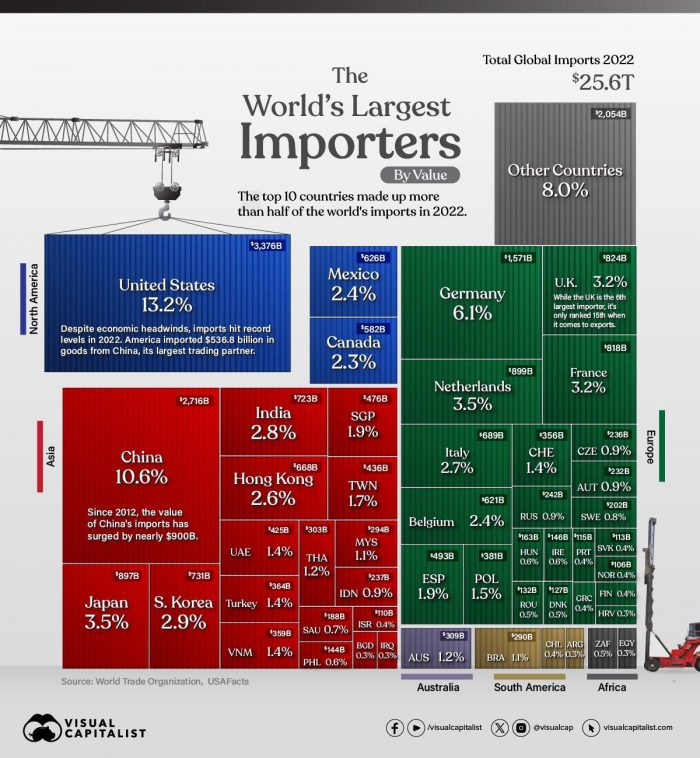
If you’re into business, it’s important to know the top importers and exporters in the world. That’s because these countries are often the biggest trade partners and help determine what goods are being sold in local markets. These countries also set prices for different goods based on demand from other nations, which can either raise or lower costs for consumers—and even businesses that don’t import goods but compete with those who do.
The United States
The United States is the world’s largest importer, importing over $2 trillion worth of goods in 2017. It imports far more than it exports and has been doing so since at least 1967. The U.S.’s top imports are transportation equipment ($402 billion), industrial supplies ($269 billion) and machinery ($212 billion). The country also imports large amounts of oil, food and other natural resources from countries like Canada, Mexico and Saudi Arabia; even though these aren’t technically “imports” because they are part of North America (NAFTA), they’re still considered part of our total trade with each other.
China
China is the world’s largest importer of goods, importing more than $2 trillion annually. China also has a large consumer population and imports much more than any other country on this list. China imports raw materials from around the world to support its booming industrial sector; it also imports many consumer goods for its people to enjoy.
Germany
Germany is the world’s fourth largest importer and second largest exporter. It has a population of 81 million people, making it Europe’s most populous country, and it is also the third largest economy in the world after the United States and China. Germany is a member of both NATO (North Atlantic Treaty Organization) and EU (European Union).
Japan
Japan is the fourth-largest importer in the world, behind only China, USA and Germany. Japan imports a lot of cars, electronics and machinery. The country has a large manufacturing sector that produces cars like Toyota Prius and Lexus sedans as well as consumer electronics such as Sony televisions and Panasonic cameras. Japan is an island nation with few natural resources so it must import most of its raw materials from other countries. This means that Japan has become very good at making things instead of just buying them from abroad! As you might imagine this makes it very expensive for them to buy anything new–and so when they do buy something new there’s usually something wrong with it…
Netherlands
The Netherlands is a small country, but it’s the fifth largest importer in the world. The Netherlands imports a lot of food and beverages–especially meat and fish–as well as machinery and transport equipment. They also import chemicals from around the world to use in manufacturing industries like chemicals manufacturing, which makes up 6% of their GDP.
With the help of these five countries, we have seen what it takes to be the top importer in the world. It’s not just about importing goods; these countries also export a lot as well. They are each unique in their own way, but they all have one thing in common: they rely heavily on trade between nations for their economic growth.
